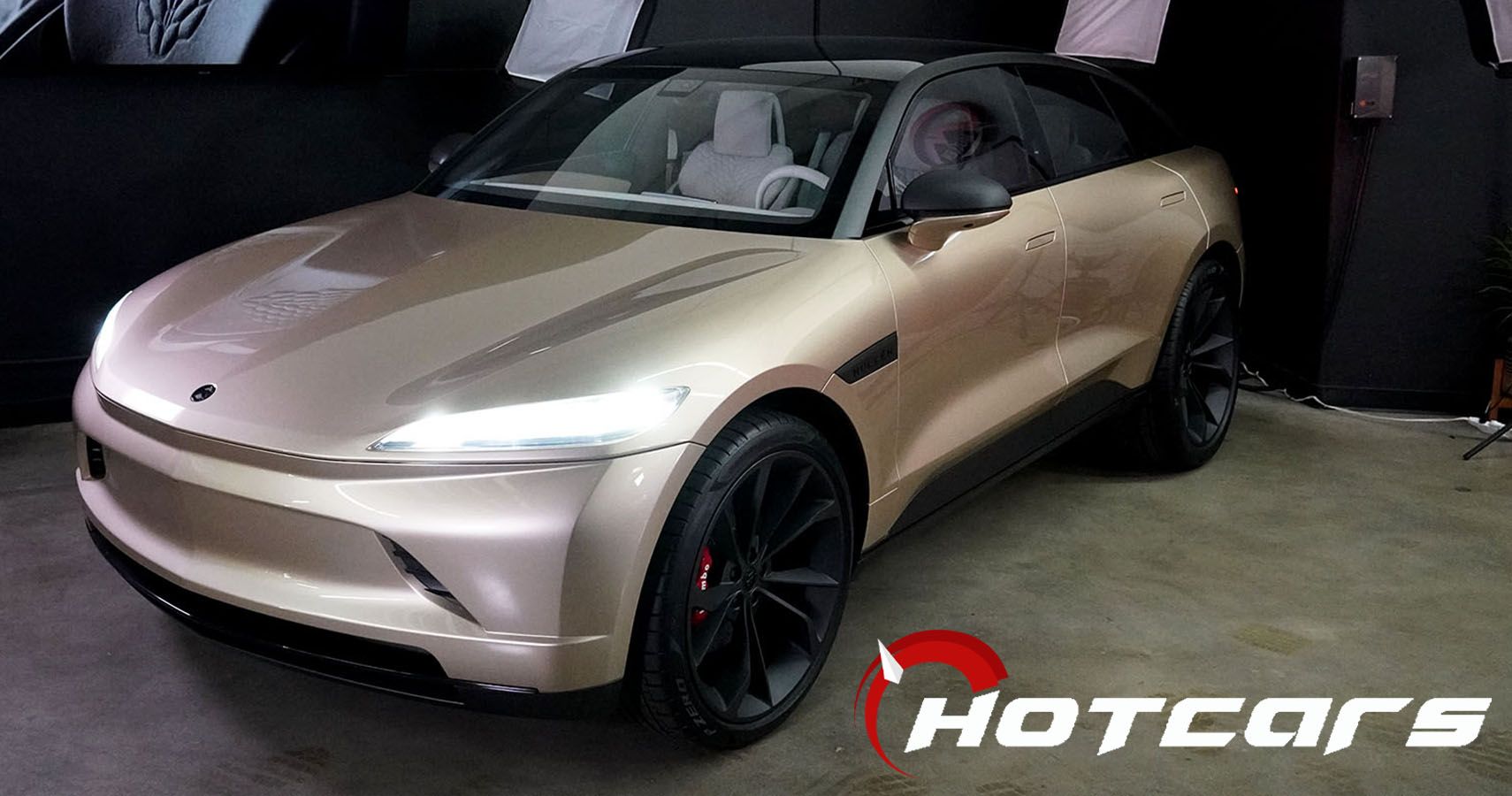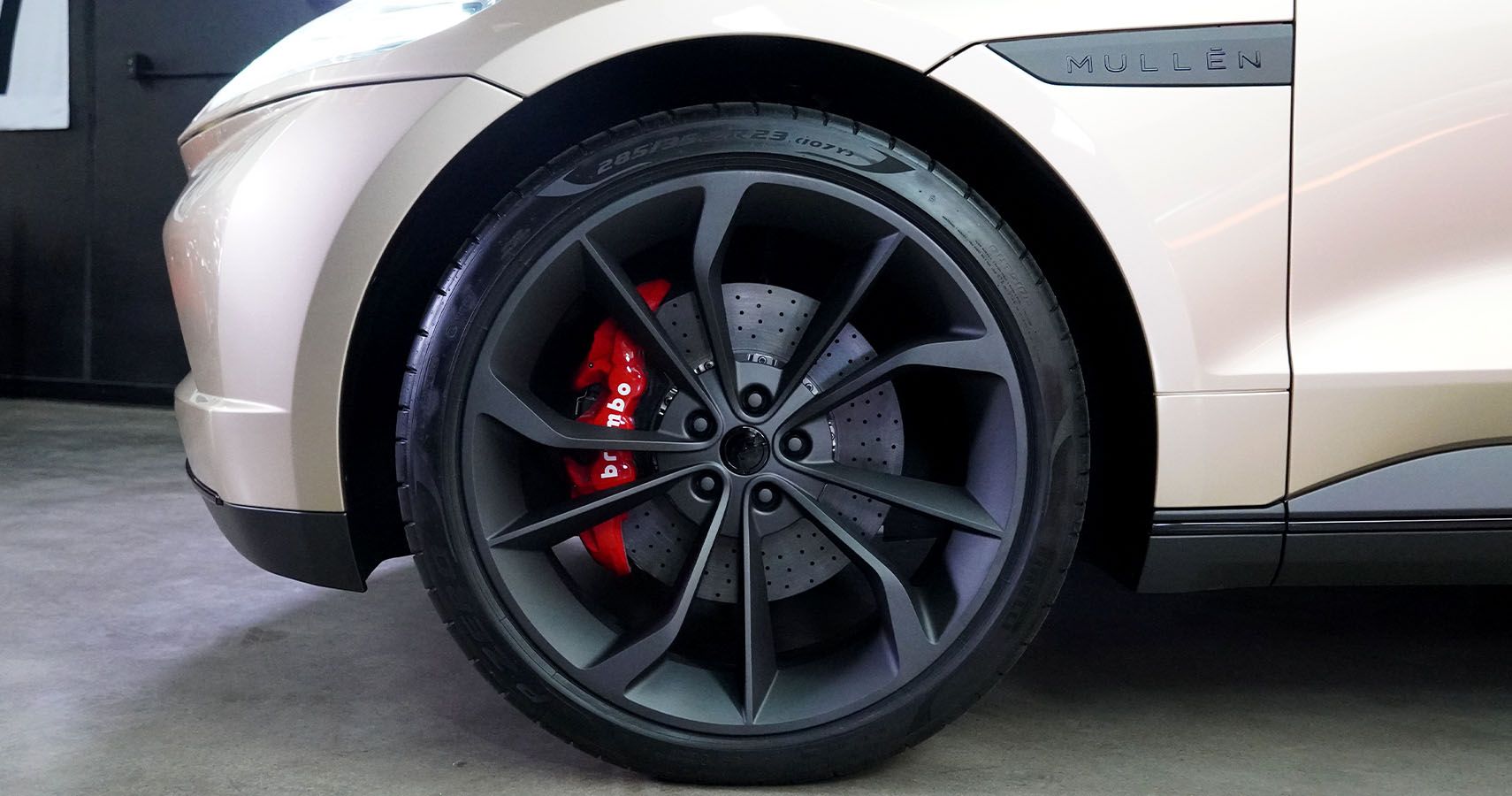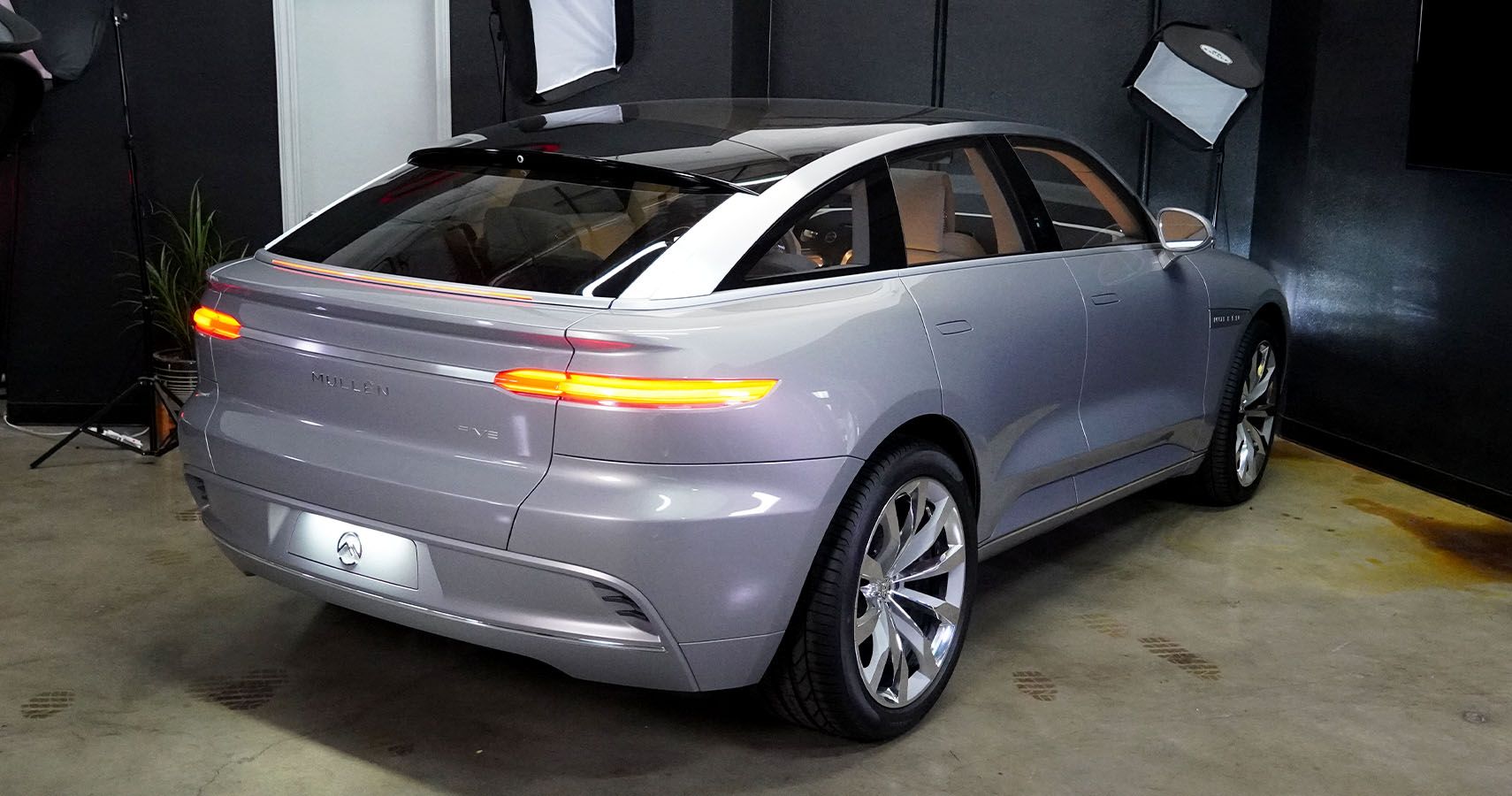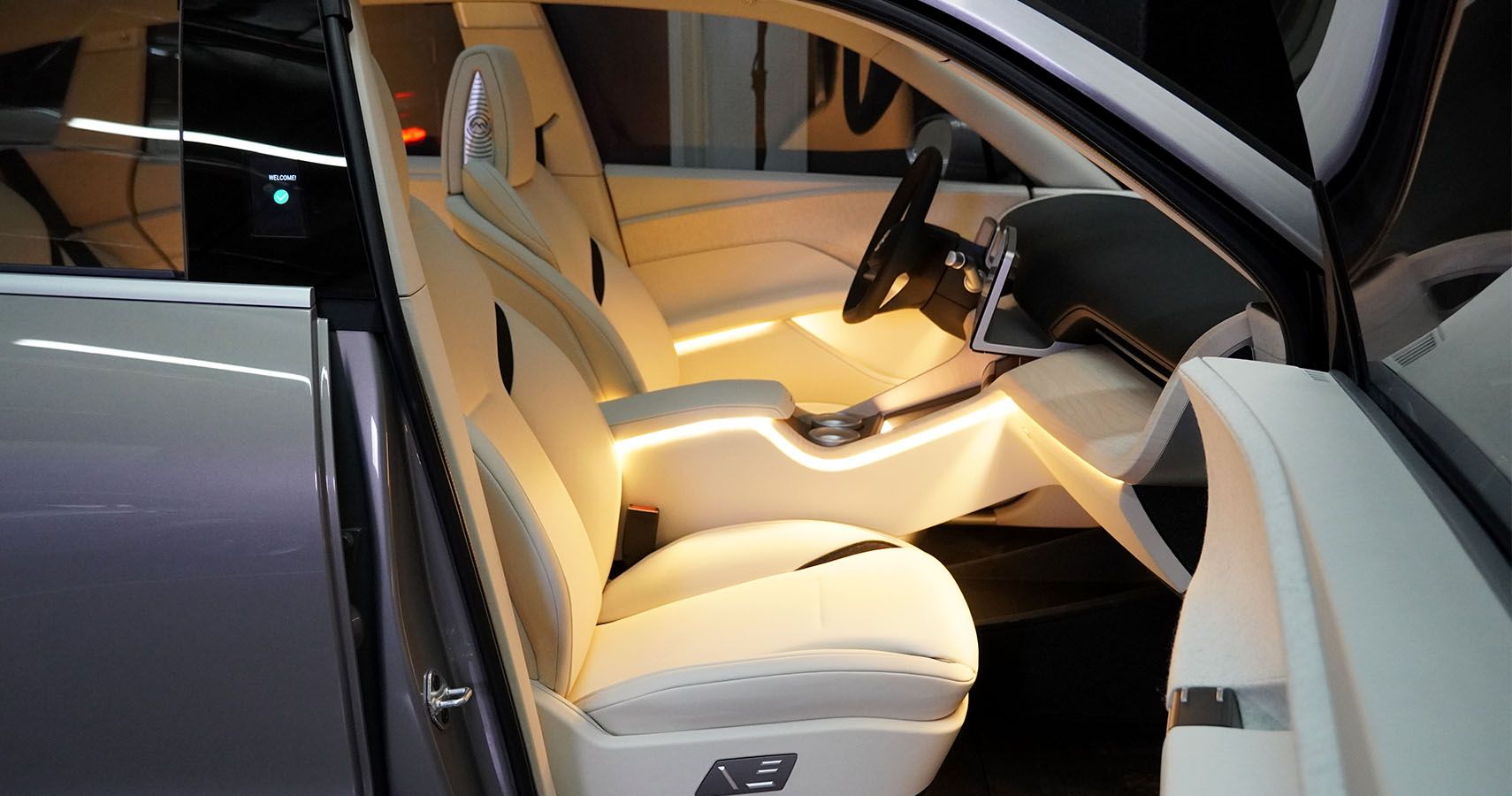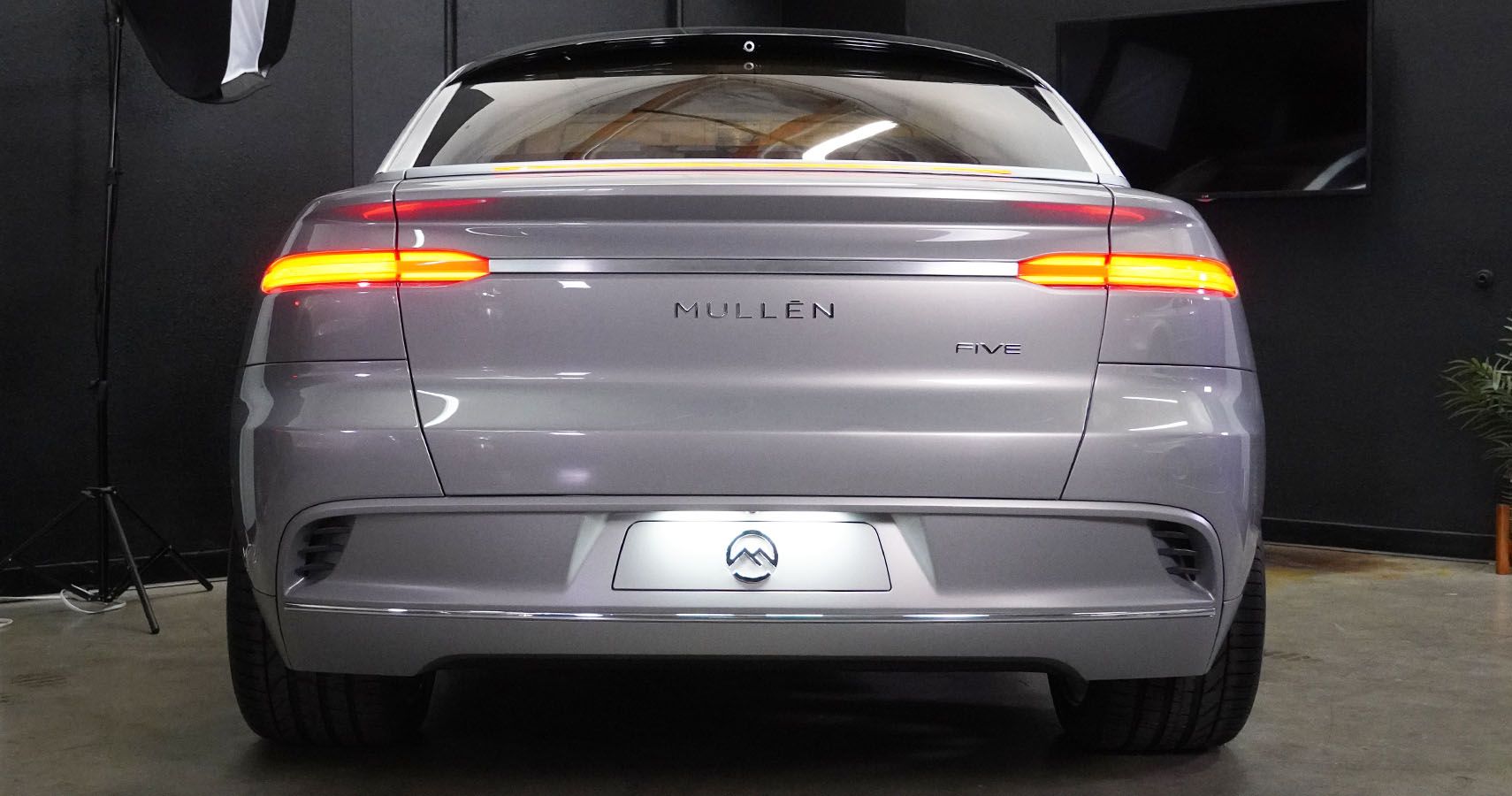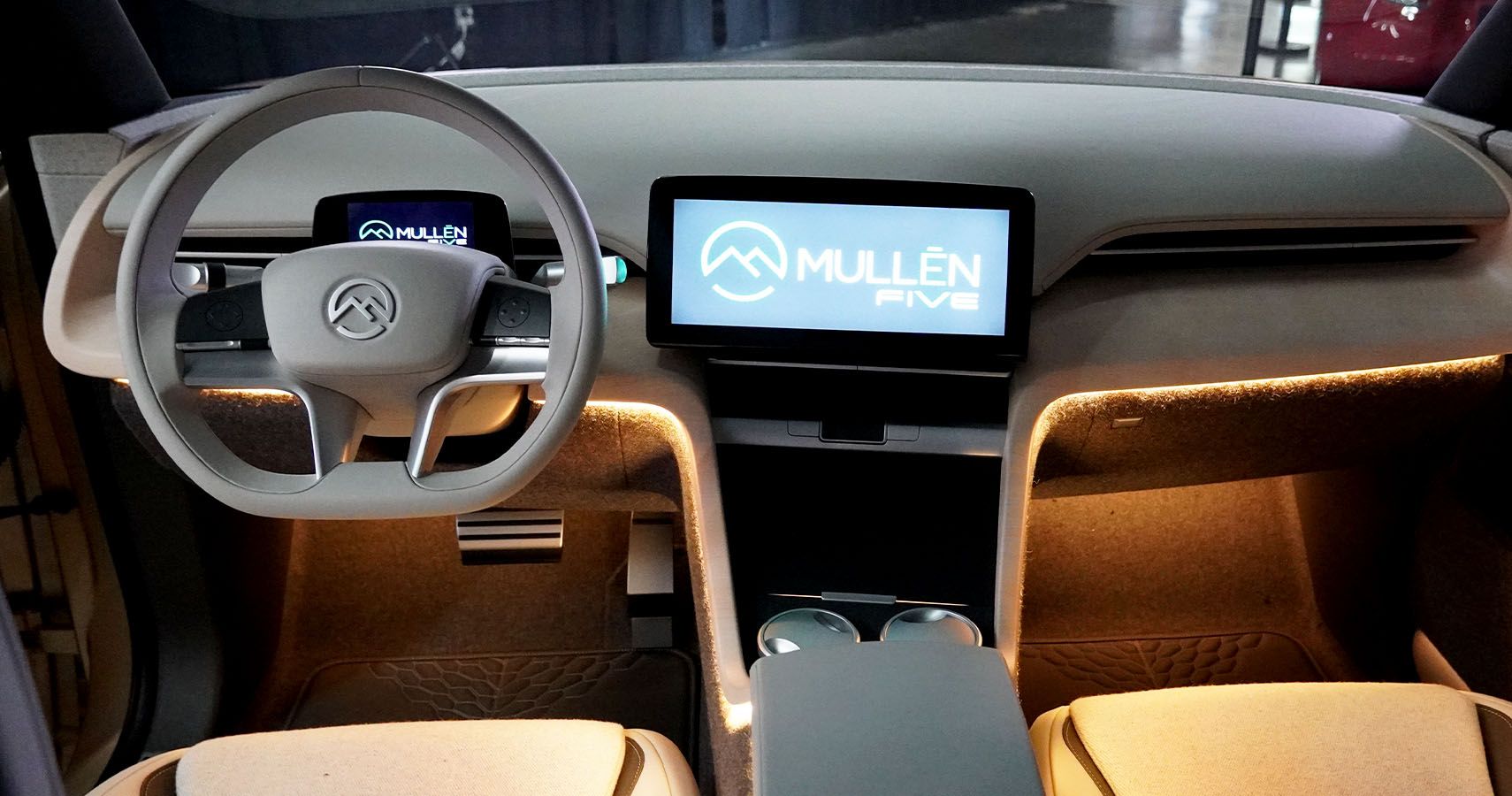The Southern California-based electric vehicle startup Mullen unveiled their FIVE crossover at this past November's Los Angeles International Auto Show. With the electric revolution no longer on the horizon but happening with each passing month, smaller companies like Mullen, Lucid, and Rivian now face the prospect of large manufacturers getting into the game in a big way.
Meanwhile, consumers who feel hesitant to actually purchase a new EV until range anxiety becomes a thing of the past can look forward to a market flush with products like Lucid's Air that can drive 520 miles on a charge, while new battery technology on the way could change the landscape entirely. Mullen promises the FIVE will offer impressive performance and style in a package priced at $55,000 to start, as well as a more powerful RS variant also in the works.
But even large companies like Lucid and Rivian faced challenges and delays on the road to development, despite massive investment from the Saudi Public Investment Fund and Amazon, respectively. To learn more about the Mullen FIVE and how the company plans to scale up to mass production, I recently visited with Chairman and CEO David Michery and VP of Engineering Marian Petrelecan in Brea, California.
A New Company Unveils A New Crossover
Michery founded Mullen in its current form after acquiring Mullen Motorcars in 2012. The plan all along involved building impressive electric vehicles.
"The company had a history in building sports cars and played around in the electric vehicle field at the same time Tesla was," Michery recalled. "They produced a Mullen GT that got some attention from MTV Cribs and Microsoft featured the vehicle in a commercial."
Michery also took over the now-defunct company Coda Automotive, which formerly produced a four-door commuter EV in 2012 and 2013. By 2019, Mullen had partnered with a Chinese firm named Qiantu to release an all-electric sports car called the Dragonfly.
"We jointly debuted the Mullen Dragonfly at the New York Auto Show, April of 2019," Michery explained. "The car was just a huge success there, garnered 150 million media impressions, we garnered a tremendous amount of orders for that vehicle, and we followed that up with sponsorship and subsequent debuts at the Indianapolis 500 where we were involved with the Super Bowl of motorcar racing."
The Dragonfly then traveled to Detroit and Pebble Beach, while appearing in television commercials, before the coronavirus pandemic ground the world to a halt.
"We thought it was a great product and very suitable for the US market. We backed off when tensions grew between the US and China following Covid."
Building Up To The FIVE
After deciding to focus more on the US market and consumer, Michery and Mullen quickly transitioned to the company's new FIVE crossover.
"It was our opportunity to build something from scratch," Michery told me. "I didn’t have to take something from somebody else and try to adapt it to something I thought it could be. This was complete from the conceptual phase to the architecture and delivery of the product."
The FIVE stands out from the increasingly bland landscape of commuter crossovers thanks to an aggressive stance and ride height, plus the popular coupe-style roofline. Michery focused on details like wheels and brakes to highlight the design's ethos.
"I look at the rims and rotors and calipers as like the shoes that you and I might wear," he said, "I wanted to have 23-inch magnesium wheels and I wanted carbon-ceramic rotors."
The only other vehicle on the market with 23-inch wheels fits right into Mullen's sights: the Lamborghini Urus. Michery will openly admit he loves the Urus and its Cayenne sibling, while hints of a Jaguar I-Pace and Lucid Air might also fit into the styling.
"We came up with something that was, in my opinion, a generational design that could outlast time."
The big wheels and brakes, which will appear on the FIVE high-spec RS variant, also help to shave weight and improve performance both in terms of range and speed—important considerations for any EV manufacturer these days.
Revolutionary New Battery Tech
The design alone helped to earn the prestigious Zero Emissions Vehicle Award (ZEVA) at the LA Auto Show, but Mullen's battery technology also drew the spotlight. In a world where concerns about rare earth metals and battery sustainability increasingly make the news, the FIVE will employ a new lithium-sulfur battery that is both lighter and recyclable, before transitioning to a solid-state polymer battery that sounds potentially revolutionary.
"Back in 2020, we tested a solid-state polymer cell that we rated at 300 Amp-hours," Michery explained. "What’s most important about it is degradation. If you look at a traditional lithium-based cell's degradation over 5,000 cycles, it’ll go down to 80%. Degradation on ours over 100,000 cycles is 2%."
The batteries will also reduce fears of spontaneous combustion, water damage, and waste production.
"You could take a torch and burn a hole right through it and it isn’t gonna ignite. You could throw it into saltwater and leave it there for a month and take it out. It’ll still work, it won’t blow up."
And critically, Michery explained that Mullen's batteries, which they've patented, will not use the environmentally damaging cobalt, magnesium, and aluminum—better for production and, simultaneously, much more recyclable.
Lithium-Sulfur Batteries Before Solid-State Polymers
"Within the next five years, we will have a commercially viable solid-state solution," Michery predicted. "And the potential return of energy is almost equal to gasoline or lithium-air."
Eventually, Mullen could lead the charge towards lithium-air batteries, which Michery explained would give the best output of any known technology but remains impossible to manage despite today's best engineering efforts. For now, the FIVE will bridge the gap towards solid-state and lithium-air with a middle ground.
"Today, Marian [Petrelecan] and his team are working on a lithium-sulfur solution," Michery said, "Which is a very good solution and probably third in line if you looked at potential."
Lighter Weight And More Range
I asked Petrelecan if he could share more about how lithium-sulfer batteries provide more range in a lighter package than the standard lithium-ion cells that most manufacturers sell.
"Anything I can tell you now, we can get in trouble," he admitted. "But I will talk about the solid-state polymer because we own the IP."
Petrelecan did specify that the FIVE's lithium-sulfur batteries should weigh around 1,200 to 1,300 pounds while providing the same range targets—around 320 miles—as a long-range Tesla's, which he said realistically weigh more like 1,500 pounds. That improvement of 10-20% should improve both acceleration and range performance, with the FIVE targeting a curb weight around 5,000 pounds. At this point, Michery jumped in to explain that the FIVE will also cater to the American buyer's economic sense of patriotism.
Built For Americans In America
Perhaps in response to the earlier partnership with Qiantu and potentially fallout from the government's response to a global pandemic, Michery pivoted to something of an "America First" plan for the FIVE.
"Here is a 100% American-built, American-designed, American-thought-out program from beginning to end," he said. "The people that are going to be executing on the processes to deliver this vehicle, the manufacturing process, the people that are going to be working at the plant are all going to be Americans. And we’re going to sell it here in America first."
To learn more about how Michery and Mullen plan to scale towards mass production in the United States and how the FIVE's design and performance could take the EV crossover market by storm, click through to Part 2 of my interview.
Sources: youtube.com, mullenusa.com, laautoshow.com, and reuters.com.

